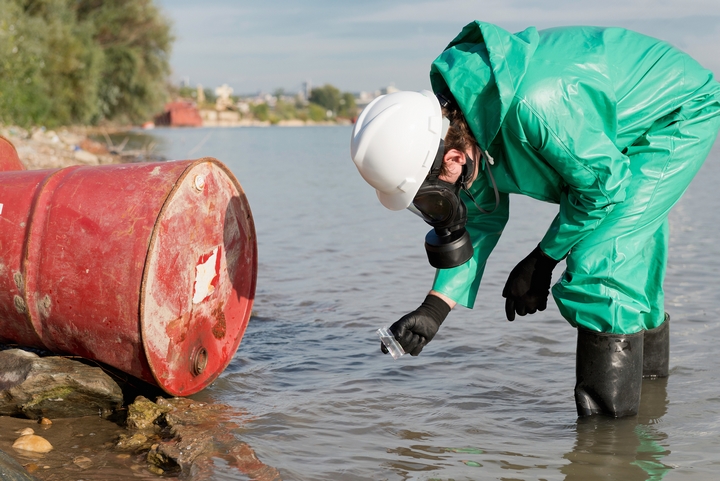Comprehensive Liquid Waste Disposal: Solutions for Homes and Companies
Comprehensive Liquid Waste Disposal: Solutions for Homes and Companies
Blog Article
Exactly How Liquid Garbage Disposal Works: An In-depth Overview of Strategies and Technologies Utilized

Review of Liquid Waste Types
The intricacy of fluid waste types requires an extensive understanding of their features and implications for disposal. Liquid waste can extensively be classified into several kinds, including commercial, community, farming, and harmful waste. Each classification shows distinct properties, requiring specific management techniques to reduce environmental and wellness dangers.
Industrial fluid waste stems from producing procedures and frequently includes a series of contaminants, such as hefty metals, solvents, and organic compounds. Local liquid waste, largely comprising wastewater from homes and commercial facilities, consists of organic issue, nutrients, and virus (industrial wastewater treatment). Agricultural liquid waste, including runoff from farms, might contain plant foods, chemicals, and pet waste, posing threats to water top quality and communities
Hazardous liquid waste is identified by its poisoning, sensitivity, or possible to trigger injury. Understanding these diverse liquid waste types is essential for creating reliable disposal techniques and ensuring compliance with environmental guidelines.
Physical Treatment Techniques

Testing is the preliminary action, where bigger fragments and particles are gotten rid of from the fluid waste making use of screens or grates. In sedimentation storage tanks, heavier particles resolve at the base, creating a sludge layer, while the clarified liquid can be additional treated.
Purification is an additional essential technique that includes passing the fluid through porous products, such as sand or membranes, to catch smaller sized fragments. This action enhances the quality of the fluid, making it appropriate for subsequent treatment processes.

Chemical Treatment Techniques
Chemical treatment methods are crucial for successfully taking care of liquid waste, particularly in dealing with dissolved and colloidal contaminants that physical methods might not sufficiently eliminate. These strategies make use of various chemical agents to neutralize, precipitate, or transform hazardous materials into much less dangerous kinds.
One common method is coagulation and flocculation, where chemicals such as alum or ferric chloride are contributed to advertise the gathering of put on hold particles. This process improves sedimentation, enabling much easier removal of the resulting sludge. In addition, oxidation processes, using representatives like chlorine or ozone, are used to damage down intricate organic substances and virus, providing the waste more secure for discharge or further therapy.
Neutralization is another critical technique, which readjusts the pH of acidic or alkaline waste streams to neutral levels, protecting against prospective injury to downstream systems and the atmosphere. Additionally, progressed oxidation processes (AOPs) utilize combinations of oxidants and ultraviolet light to weaken persistent toxins, accomplishing a greater degree of treatment efficiency.
Organic Treatment Procedures
Organic treatment processes play a critical duty in the administration of liquid waste by using bacteria to decay organic issue and decrease pollutant degrees. These processes can be extensively classified right into anaerobic and cardio therapies, each using particular microbial areas to attain efficient waste degradation.
Cardio treatment includes the usage of oxygen to facilitate the malfunction of organic materials by bacteria. This process is generally click resources applied in turned on sludge systems, where oygenation containers give a helpful setting for microbial growth, causing the oxidation of natural toxins. The resultant biomass can be divided from treated effluent with sedimentation.
In comparison, anaerobic therapy takes place in the lack of oxygen, counting on various microorganisms to damage down organic matter. This method is particularly advantageous for high-strength waste, as it generates biogas, a renewable resource source, while reducing sludge production. Technologies such as anaerobic digesters are regularly used in local and commercial applications.
Both anaerobic and aerobic biological treatments not only minimize the environmental effect of liquid waste but also promote resource recuperation, making them crucial elements of lasting waste monitoring approaches. Their performance, adaptability, and effectiveness support their extensive implementation across different markets.
Emerging Technologies in Disposal
Innovative methods to liquid garbage disposal are swiftly progressing, driven by developments in innovation and a raising emphasis on sustainability. Amongst these emerging innovations, membrane layer bioreactors (MBRs) have actually acquired traction for their ability to combine biological therapy with membrane purification, leading to high-quality effluent that can be reused in different applications. MBRs make it possible for smaller sized impacts and much more effective procedures contrasted to traditional systems.
One more encouraging growth is the usage of anaerobic digestion integrated with nutrient recovery technologies, which not just deals with fluid waste however additionally generates biogas and recuperates beneficial nutrients like nitrogen and phosphorus. This double advantage improves resource efficiency and minimizes ecological influence.
Additionally, advanced oxidation procedures (AOPs) are being adopted for the degradation of intricate natural toxins. These methods make use of powerful oxidants and stimulants to damage down impurities at the molecular degree, using an extremely efficient service for challenging waste streams.
In addition, the combination of fabricated intelligence and artificial intelligence in waste management systems is optimizing operational effectiveness and anticipating upkeep, bring about reduced expenses and enhanced environmental compliance. These innovations show a considerable shift towards more reliable and sustainable fluid garbage disposal click for info techniques.
Verdict
In verdict, effective liquid waste disposal necessitates a thorough understanding of different strategies and technologies. By constantly advancing these approaches, it becomes possible to resolve the expanding obstacles connected with liquid waste, inevitably contributing to environmental protection and resource healing.
Fluid waste disposal is a critical aspect of ecological management, requiring a detailed understanding of different techniques and innovations customized to different waste kinds. Liquid waste can extensively be categorized right into numerous kinds, read what he said consisting of commercial, local, agricultural, and hazardous waste. Agricultural liquid waste, consisting of overflow from ranches, might contain plant foods, pesticides, and animal waste, posturing dangers to water quality and ecosystems.
Numerous physical treatment approaches play an essential function in taking care of fluid waste successfully - industrial wastewater treatment.In verdict, reliable liquid waste disposal necessitates a detailed understanding of different methods and innovations
Report this page